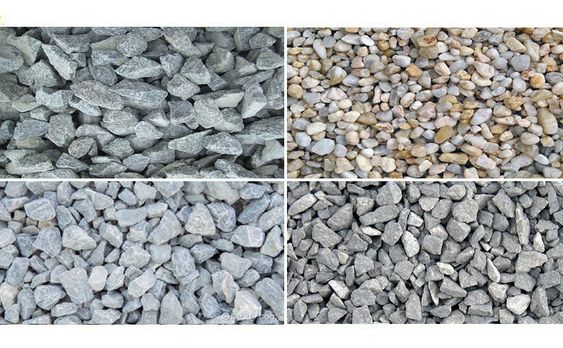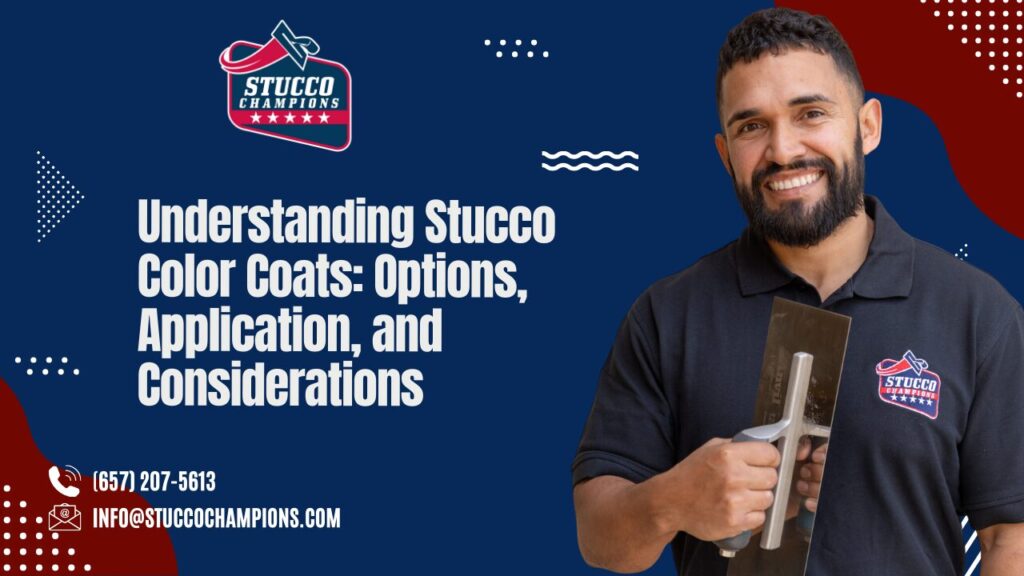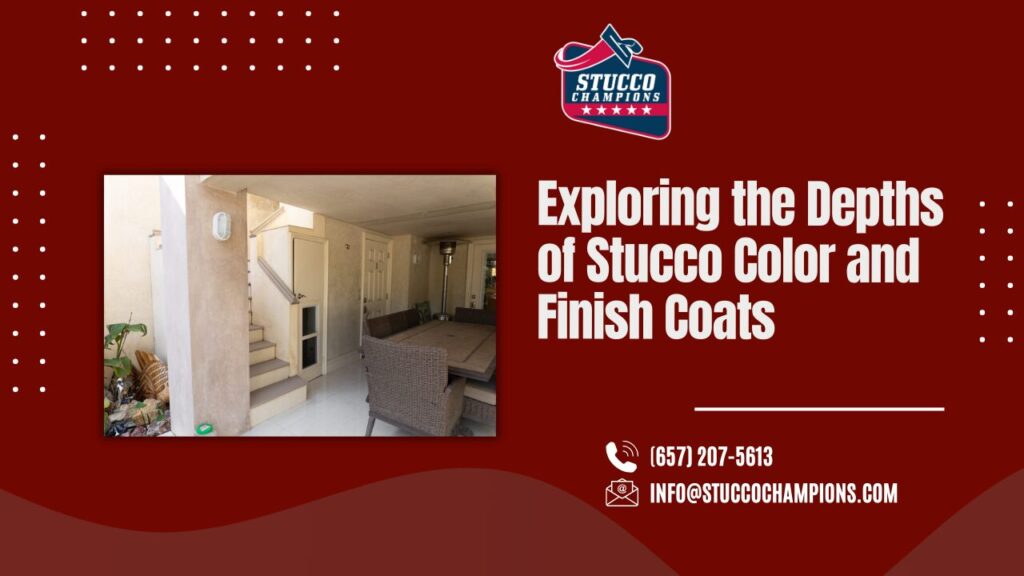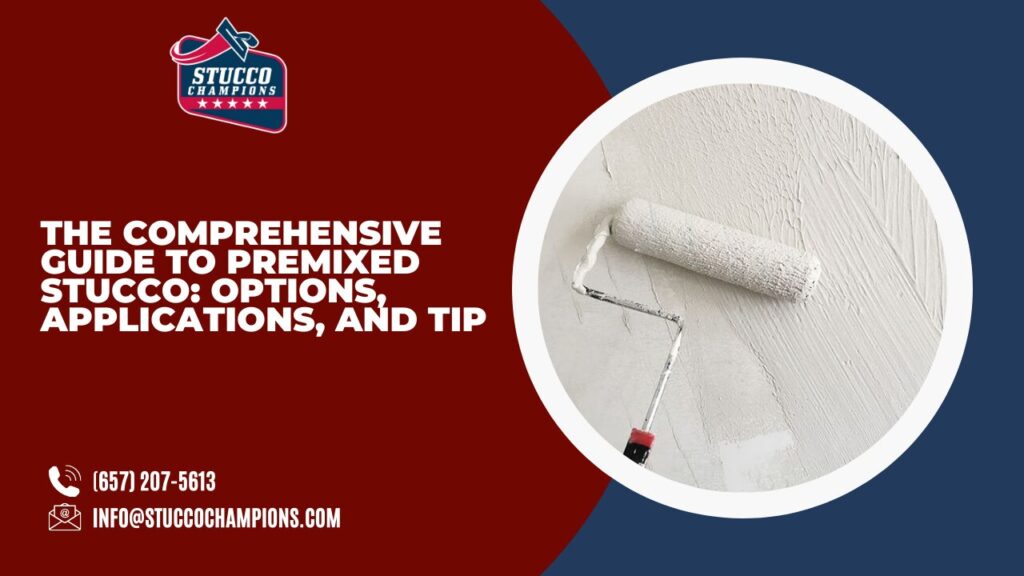The Aesthetics and Functional Quality of Stucco Color & Finish Coats
Stucco color and finish coats are pivotal in defining the aesthetic and functional quality of a building’s exterior. In this comprehensive guide, I leverage my practical knowledge and experience in stucco application to delve into the intricacies of stucco coats, focusing on thickness, material differences, and application techniques. This article aligns with reputable sources and building codes, ensuring accuracy and reliability.
Understanding Stucco Thickness
A stucco color or finish coat varies in thickness, typically ranging from 1/16″ to 1/4″. This variance is influenced by factors like the type of finish, the number of coats applied, and the chosen finish material. Let’s explore the different materials and their associated thicknesses:
Acrylic Color Coat Thickness
Acrylic finishes are generally thinner than cement-based coats. They range from 1/16″ to 1/8″ for a single coat, with the possibility of building up to about 3/16″ for thicker, coarse finishes. The aggregate type plays a significant role in determining thickness:
- Super Fine Acrylic: Up to 1/32″-1/16″ per coat
- Fine Acrylic: Around 1/16″ per coat
- Medium Acrylic: Between 1/16″-1/8″ per coat
- Coarse Acrylic: Approximately 1/8″ per coat
These acrylic products, stored wet like paint, have a pre-determined thickness, contrasting with traditional finishes where water addition adjusts consistency.
Aggregates and Their Impact
In acrylic finishes, aggregates such as crushed quartz replace traditional silica sand, influencing the final thickness. The size of these aggregates determines the cured thickness on the wall:
- Fine Aggregate: Up to 1/16″ per coat
- Medium Aggregate: Around 1/8″ per coat
- Coarse Aggregate: Between 1/8″-3/16″ per coat
The aggregate acts as a screed during application, with the trowel technique influencing the final thickness. Lighter trowel pressure can lead to thicker applications, depending on the desired texture.
Traditional Color Coat Thickness
Traditional (cement-based) finishes offer more thickness variability. The addition of water to the mix allows for adjustments in consistency. Theoretically, these can range from a thin 1/16″ for fine aggregates to a thicker 5/16″ for super coarse materials. However, thicker applications risk cracking due to higher lime content.
Aggregates in traditional finishes primarily include silica sand:
- Fine (30 mesh sand)
- Medium (20 mesh sand)
- Coarse (16 mesh sand)
Manufacturers often blend sand sizes for uniformity, with larger sand sizes contributing to thickness.
The Finish Type and Its Effect
The chosen finish type influences the coat’s thickness. For example, a dash finish (sprayed on) tends to build up more material compared to a troweled finish, which is applied more tightly and thinly for a smoother appearance.
Single vs. Double Coat Finishes
Finish coats can be applied in one or two layers. A single coat is inherently thinner, while a two-coat finish involves applying two thin layers, not two heavy ones. This approach ensures minimal thickness but enhanced texture and durability.
Certification and Professional Expertise
As an experienced practitioner in stucco application, I emphasize the importance of professional qualifications and certifications. It’s crucial to engage certified professionals who adhere to building codes and manufacturer guidelines, ensuring a high-quality and safe application.
Transparency and Recommendations
This article is an unbiased presentation of my knowledge in stucco application. Any product mentions are based on professional experience without any affiliated endorsements.
Technical Terms Explained
- Mesh: A measure of particle size, especially in aggregates.
- Trowel: A flat-bladed tool used for applying and smoothing stucco.
Regional Variations
Stucco materials and application techniques may vary regionally. It’s important to consult local experts or building codes for region-specific practices.
Pros and Cons of Thickness Ranges
Thicker coats are adept at hiding imperfections but may be prone to cracking. Thinner coats, while less forgiving of surface flaws, tend to be more durable and less risky in terms of cracking.
Estimated Costs and Material Quantities
Costs and material quantities for stucco finishes vary. Thicker applications generally require more material, impacting the overall cost. Consult with professionals for precise estimates based on your project’s specifications.
Application Methods and Tools
Different thicknesses require specific application methods and tools. For instance, thicker coats might need a heavier trowel technique, whereas thinner coats require a more delicate approach.
Maintenance of Textured Finishes
Maintenance varies with texture. Rougher textures might harbor more dirt and require frequent cleaning, while smoother finishes are easier to maintain but might show imperfections more readily.
Concluding Thoughts
Stucco color and finish coats are essential in determining a building’s aesthetic and functional integrity. Understanding the nuances of material types, thicknesses, and application techniques is key to making informed decisions. This guide aims to empower homeowners and construction enthusiasts with the knowledge to choose the right stucco finish for their needs.
Last week, we shared The Comprehensive Guide to Premixed Stucco: Options, Applications, and Tips, highlighting the advantages of premixed stucco and how to use it effectively for your projects. If you’re considering premixed stucco, be sure to check out this detailed guide for expert insights!




